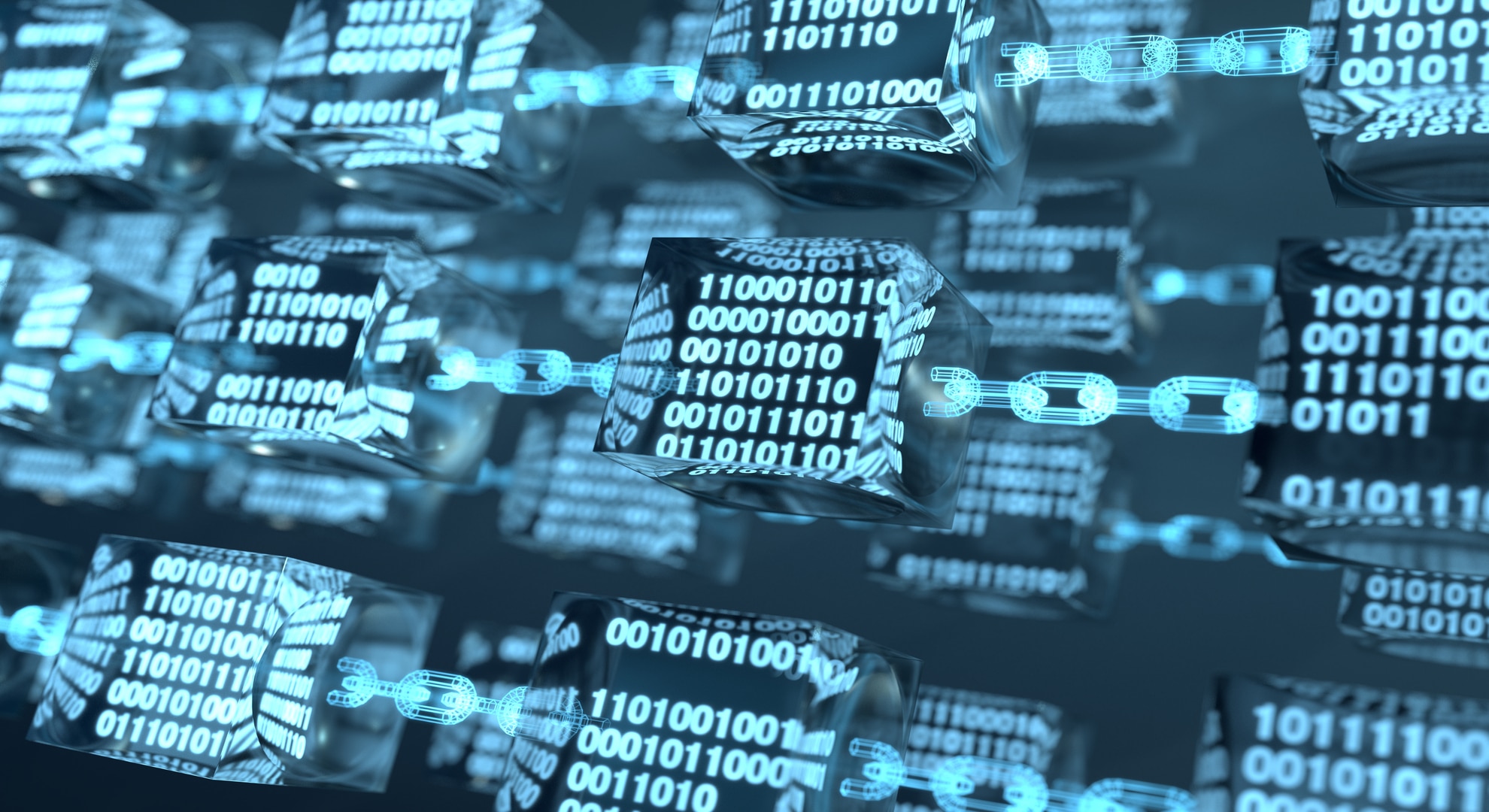
28 Jan Using blockchain to guarantee data protection
Blockchain technology is transforming data transmission in a variety of digital environments. The most often discussed and most highly developed aspects typically involve financial markets and cryptocurrencies, but they’re far from the only ones… Given the nature of blockchain, it also signifies an opportunity to significantly increase the security of information exchanges taking place between entities, companies and other groups.
Thanks to the greater capacities and speed of transmission infrastructure, such as fibre optic, data volumes can also be significantly boosted. And thanks to blockchain, transferred data can benefit from greater protection, alongside the provision of a certain level of anonymisation within information flows. While this doesn’t mean total shielding, the distributed networks involved in blockchain technology – as well as its intrinsic characteristics – certainly offer greater security.
What is blockchain and why is there a conflict with the GDPR?
In blockchain technology, data is exchanged between two parties – the sender and the receiver – but, in order for these information transactions to be ‘validated’, they need to be approved or registered by the rest of the nodes within the blockchain. That’s how blockchain is a distributed information network. Once a block – or an information exchange – is registered, it’s impossible to modify, delete or replace it with another one. The chain will continue to grow and grow with new blocks being added until it reaches the maximum capacity of that particular network.
Although it’s true these blocks of blockchain are essentially anonymous, the fact they remain registered ‘forever’ on distributed networks means they conflict with the ‘right to be forgotten’ and the ‘right to rectification’ of European Regulation 2016/679 on Data Protection (the GDPR). Similarly, the fact IP addresses and other types of data are recorded mean members of the network could potentially be identified – although not without a lot of difficulty.
Data management within blockchain. The solution of one Spanish startup
These issues have found a simple solution in the form of one Spanish startup, Blocknitive. With their Asentify Data solution, blockchain technology can be integrated within the GDPR, guaranteeing both the privacy and security of information exchanges between businesses, as well as – more importantly – everyone’s rights. Thanks to Asentify Data:
- Data is interoperable
- Personal information consent can be managed
- Movements, both inside and outside the organisation, can be traced
Business Development Director Miguel Peco Perea confirms “we’ve managed to find an alternative way forward, keeping personal data outside the blockchain. This means we can protect people’s information and activate security and privacy filters”.
With solutions like this, the economic and reputational risks brought about by the inability to trace data exchanges are minimised. On the other hand, agility within these processes can be boosted. According to Peco, thanks to aligning blockchain with the GDPR, “not only are we optimising corporate information processes, making them more secure and transparent, we’re also able to reduce costs by up to 50%, and the time and effort involved by 80%”.
Overcoming the hurdles that privacy and personal data management entail, blockchain technology can continue its climb towards becoming the technological innovation being called upon to definitively transform information flows between businesses and organisations, as well as their security and anonymity beyond private networks.

